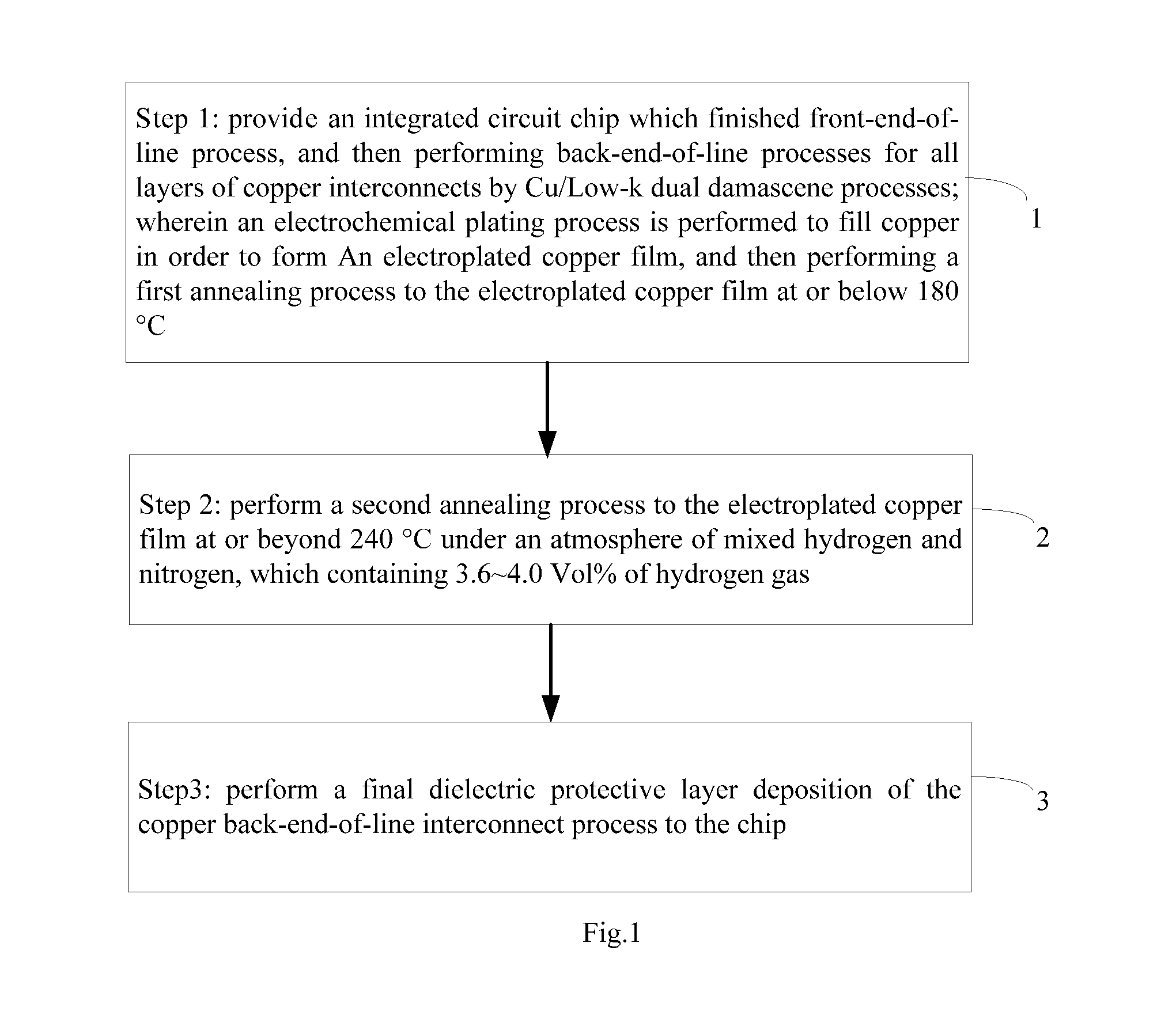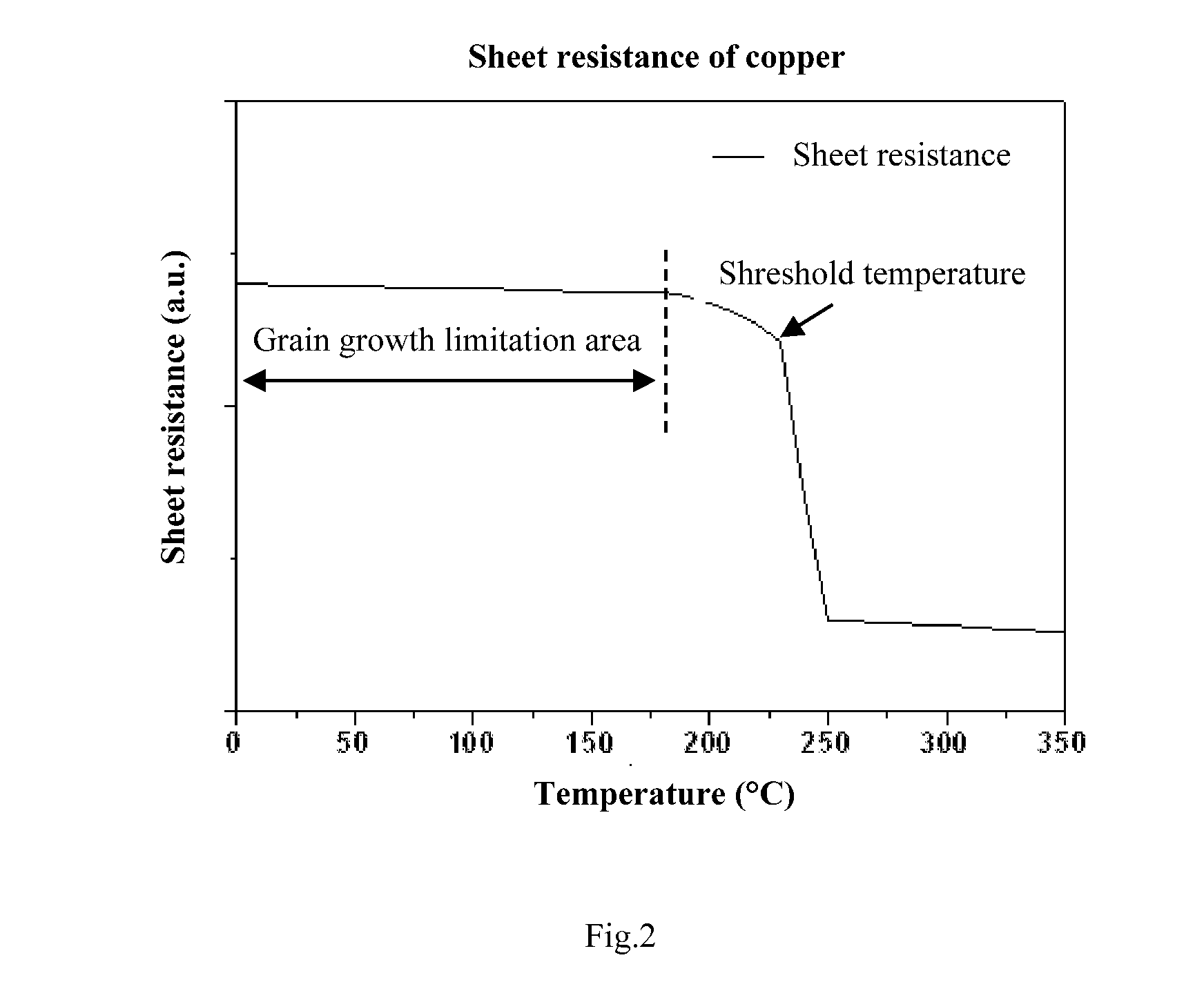Method for processing an electroplated copper film in copper interconnect process
- Summary
- Abstract
- Description
- Claims
- Application Information
AI Technical Summary
Benefits of technology
Problems solved by technology
Method used
Image
Examples
Embodiment Construction
[0029]The present invention will now be descried more fully hereinafter with reference to the accompanying drawings. This invention may, however, be embodied in different forms and should not be construed as limited to the embodiments set forth herein. It will be understood by those skilled in the art that various changes in form and details may be made herein without departing from the spirit and scope of the invention.
[0030]Referring to FIG. 1, illustrating a flow chart of the method for processing an electroplated copper film in copper interconnect process according to one embodiment of the present invention. In the embodiment, the method for processing the electroplated copper film includes the following steps:
[0031]As shown in the box 1 of the FIG. 1, the step 1 includes: providing an integrated circuit chip which finished front-end-of-line process, and then performing back-end-of-line processes for all layers of copper interconnects by Cu / Low-k dual damascene process; wherein ...
PUM
 Login to View More
Login to View More Abstract
Description
Claims
Application Information
 Login to View More
Login to View More - R&D
- Intellectual Property
- Life Sciences
- Materials
- Tech Scout
- Unparalleled Data Quality
- Higher Quality Content
- 60% Fewer Hallucinations
Browse by: Latest US Patents, China's latest patents, Technical Efficacy Thesaurus, Application Domain, Technology Topic, Popular Technical Reports.
© 2025 PatSnap. All rights reserved.Legal|Privacy policy|Modern Slavery Act Transparency Statement|Sitemap|About US| Contact US: help@patsnap.com


